Illyrians
Q146715Illyrians (Greek Ἰλλυρίοι): the name the ancient Greeks and Romans gave to the various tribes and states in the general area of Albania and former Yugoslavia.
Name
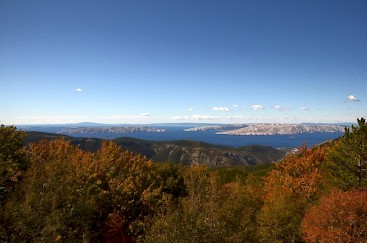
The name "Illyrians" is a bit problematic. Originally, the Greeks appear to have used this name to indicate the people living to the northwest of Macedonia: tribes like the Enchelei (near Lake Ohrid) and the Chaones in what is now called Albania.note Later, this name was applied to all tribes living in the northwest: the Dalmatians and Liburnians, for example, were living along the eastern shore of the Adriatic Sea in what today is Croatia, while others were living in the interior up to the river Danube. Examples of this wider use of the expression can be found in Herodotus' Histories and Appian's Illyrian Wars.note
When the Romans conquered this area, they called it Illyricum, which they divided into several provinces: Pannonia, Dalmatia, and Epirus. Writing in the early 70s of the first century CE, the Roman author Pliny the Elder discerned Illyrians and "Real Illyrians", the latter of them living in the south.note In the fourth century CE, the word "Illyricum" referred to a diocese that covered modern Bosnia, Croatia, Slovenia, Austria, and western Hungary.
In sum, "Illyricum" has had several meanings and it comes as no surprise that there was little that united the inhabitants of this area. They never identified themselves as Illyrians.
Language
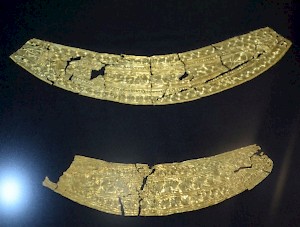
Linguists recognize an Indo-European Illyrian language, but it is almost entirely known from topographical and personal names. Among the known words are teuta, "people", sabaia, "beer",note and the name Deipaturus, which is identical to Latin Jupiter and Greek Zeus. So far, there are no Illyrian inscriptions and we have no idea about Illyrian literature. As a consequence, it is not even clear whether Illyrian was one single language or a group of languages. (Until the 1960s, the term was even used to refer to all non-Celtic languages on the western Balkan Peninsula.)
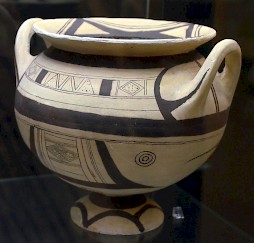
Two hypotheses about the Illyrian language deserve to be mentioned. To start with, perhaps the two Albanian languages, Geg and Tosk, are derived from ancient Illyrian. From a topographical point of view, this is plausible and it must be noted that the word Albanoi is used by the Greek geographer Ptolemy for a tribe he identifies as Illyrian.note Moreover, some Illyrian names are understandable as Albanian: for example, Illyrian Bardylis resembles Albanian bardhyl, "white star", while the Taulanti (an Illyrian tribe) may be understood as the "swallows", dallëndyshe in Albanian. However, similarities like these must not make us ignore the great differences between the ancient and modern language.
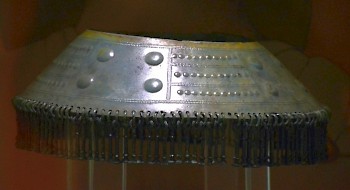
The other hypothesis is that Illyrian is related to Messapic, a language spoken in Apulia (the "heel" of Italy). There are indeed ties between the two areas: because northern winds are common in the Adriatic Sea, it is easy to sail from the Illyrian islands to the opposite shore. Returning home, these sailors brought back products that were stored in Apulian pottery, which has been found in great quantities along the Illyrian shore.
Because we know so little about the Illyrian language, these hypotheses cannot be tested. However, we are certain that they cannot both be true because Messapic and Albanian are certainly not related.
Early History
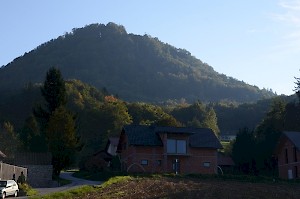
As speakers of an Indo-European language, the Illyrians must have come tot the land to the east of the Adriatic Sea from the east, but it is not clear how and when this happened, if it was one process at all. It seems that in the northern areas, the archaeologists can recognize continuities, indicating that "Illyrianization" took place locally. More to the south, there may have been a discontinuity of some kind, perhaps a migration in the first half of the second millennium. All of this is debated.
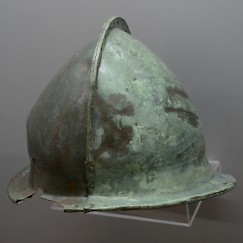
However this may be, the archaeological evidence also proves that over the centuries, society became more complex. Although agriculture remained quite simple, people acquired some wealth. Trade became more important: we already noticed the exchange of products with southern Italy. The northernmost part of Illyria, Istria, was an important node in the Amber Route, but cattle, timber, iron, and salt appear to have been important as well.
The fact that in the Late Bronze Age, people started to build hillforts indicates that they owned precious things that they had to protect with military means. Military equipment has been found on many places. The archaeological evidence - for example, the giant tumulus at Kamenica - also proves that society was becoming more complex and stratified.
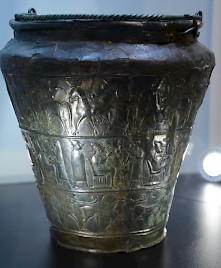
In the Hallstatt period (c.800-c.500 BCE), we can identify the first Illyrian kingdoms. The Vače situla, a bronze vessel found in Slovenia, shows people sitting on thrones, soldiers, horses, chariots, a sacrifice, servants, and something that may be a ritual combat or an athletic contest.
By now, the Greeks had become increasingly interested in the Adriatic Sea. They founded several new towns, which included (from south to north) Apollonia, Epidamnus or Dyrrhachium, Lissos, Epidaurum, Narona, Corcyra Melaina, Pharos, and Issa. Archaeologists have found many Greek helmets along the Adriatic shores, which are called "Illyrian helmets" but were in use by almost all ancient nations: Illyrians, Greeks, Etruscans, and Scythians.
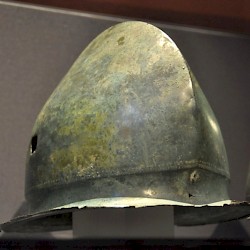 Zenjak, Hallstatt helmet |
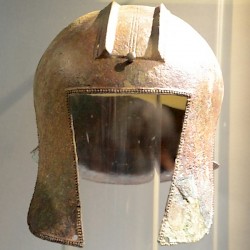 Cres, Graeco-Illyrian helmet |
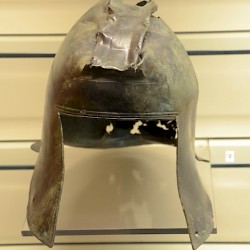 Zagvozd, Graeco-Illyrian Helmet |
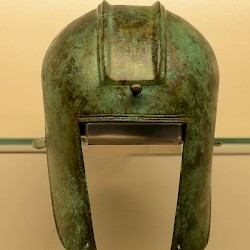 Hvar, Graeco-Illyrian helmet |
Macedonians and Illyrians
Benefiting from trade and piracy, the Illyrian kingdoms became stronger. And more aggressive. From the fifth century BCE on, Greek sources record military conflicts, which usually have to do with nearby Macedonia. For example, in 423, a south-Illyrian tribe (perhaps the Taulantii or the Encheleii) invaded Macedonia, which was supported by the Spartan general Brasidas. The Illyrians were defeated.note
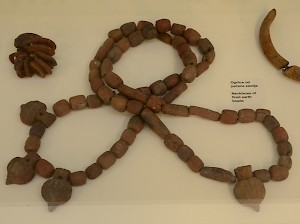
We also read about several campaigns by Bardylis I, the founder of the Dardanian kingdom in what is now Kosovo.note In 393, Bardylis replaced the Macedonian king Amyntas III with a puppet king. When in 359 a new king of Macedonia, Perdiccas III, tried to shake of the Dardanian yoke, he was soundly defeated.note Perdiccas’ brother and successor Philip, however, was able to turn the tables and in 358 the old Bardylis was killed in action during a decisive battle.note Philip again defeated an Illyrian tribe in 344.note
Philip’s successor, Alexander III the Great, had to deal with Dardanian aggression at the beginning of his reign, but in 335, he defeated king Cleitus, son of Bardylis, in the battle of Pellion.note After that, it seems that the Dardanian kingdom was dependent on Macedonia. This tranquil state of affairs came to an end when Cleitus’ son Bardylis II rebuilt the south Illyrian kingdom at the beginning of the third century BCE, only to be defeated by king Pyrrhus of Epirus.
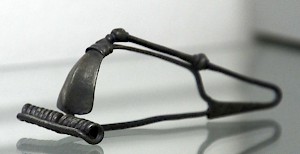
The Dardani were not the only Illyrian kingdom at war with Macedonia. In what is now called Albania lived the Taulanti. They were probably the tribe that had been defeated by Philip in 344 (above). In 314, one of Alexander's successors, Cassander of Macedonia, invaded the land of the Taulanti, subdued the tribe, and added the Greek towns of Apollonia and Epidamnus to his realm, essentially creating a land route from the Aegan Sea to the Adriatic Sea. Two years leater, the Taulantian king Glaucias regained the positions he had lost and seized control in the two Greek towns.
In this confused age, the Celts penetrated the Balkans. Among the new tribes were the Scordisi in what is now called Serbia. In the late 280s, they invaded Thrace and Macedonia, reaching Delphi in the year 279. By now, the Balkan peninsula was completely destabilized.
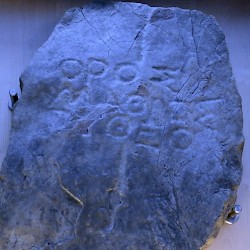 Hvar, Stari Grad, Boundary inscription |
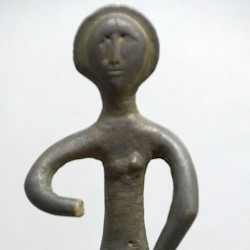 Konjic, Figurine of Venus Pudica |
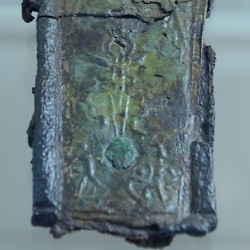 Prozor, Late Iron plaque |
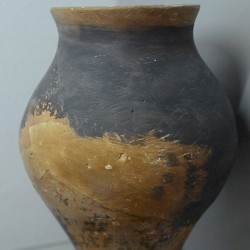 Prozor, Late Iron pottery |
Illyrian expansion
Until the fourth century, the navies of Corinth, Syracuse, Tarentum, and Athens had protected Greek merchants in the Adriatic against Illyrian pirates. However, by the mid-third century, Corinth and Athens were controlled by Macedonia, which preferred to keep these city-states dependent and discouraged strong navies. The same applied to Tarente and Syracuse, which had by now become dependent on Rome.
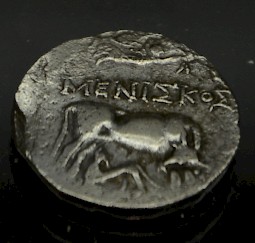
Illyrian piracy was now unchecked, while at the same time, some Illyrian tribes were united by king Agron, whose residence was near Kotor in modern Montenegro. His kingdom was the "real Illyricum" mentioned above. Unlike earlier leaders, Agron was not an enemy of Macedonia, but its friend. In 239, he helped his ally in the Demetrian War, in which king Demetrius II of Macedonia faced an alliance of the Aetolian League and the Achaean League in western Greece and the Peloponnese. While the Macedonians invaded Epirus and attacked the Aetolian homeland from the north, Agron successfully attacked an Aetolian army that was active in Acarnania.
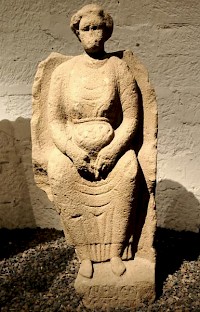
From now on, the lllyrians had imperialistic ambitions. In 230, Agron's widow and successor Teuta subdued Epirus and Acarnania. In the next year, the Illyrians attacked Corcyra, which meant that they controled the lines of communication between Greece and Italy. This was something that Rome could not allow to happen.
The Roman wars
The direct cause of the First Illyrian War (229-228) was a incident at queen Teuta's court, which - according to the only source we have - led to the assassination of a Roman diplomat. While the Romans prepared for war, Teuta occupied Corcyra, but the commander she left over there, Demetrius, immediately handed over the town to the Romans. Soon, the Romans had also gained control of Epidamnus, Apollonia, and Issa. This was sufficient to force Teuta to come to terms and she abandoned all conquests, while Rome was now in control of the lines of communication between Greece and Italy.
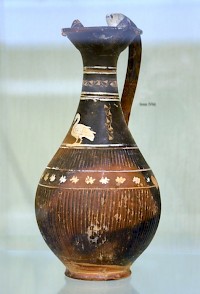
The Demetrius who had surrendered Corcyra to the Romans succeeded Teuta, resorted to piracy again, and expanded his zone of influence to Istria in the north. In 219, the Romans realized that they had to put an end to it, because in the far west, Hannibal was becoming dangerous. In the Second Illyrian War, they swiftly restored order. When peace was signed in 218, Rome had freed itself to fight the Second Punic War (218-202). This may have decisive, because when Hannibal later allied himself to Macedonia, Rome could prevent Macedonian reinforcements from reaching Hannibal.
Understandably, the Illyrian king Pleurates III (r.c.205-181) preferred to be a Roman ally and he was awarded some land after the Second Macedonian War (200-197). His son and successor Gentius, on the other hand, wanted to restore Illyrian power. This may have been a response to Rome's increasing involvement on the eastern shores of the Adriatic: in 177, the towns of Histria (like Nesactium) were conquered. When the Third Macedonian War broke out (171-168), Gentius supported the Macedonian king Perseus, and paid the inevitable price: after the Romans had defeated their main opponent in the battle of Pydna (168), they attacked the Illyrian kingdom and dismantled it. After this Third Illyrian War, the eastern shore of the Adriatic Sea was essentially Roman.
Further Roman campaigns
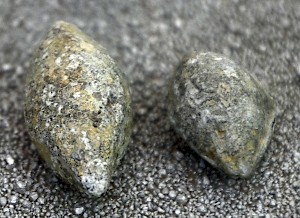
Due to the relative poverty of inner Illyricum, and because there were few strategic goals to be reached, Rome was not really interested in further conquests. Still, it ended up expanding its zone of influence from the "real Illyricum" to the north and east: it had to defend the coastal area against raiders from the interior. There were punitive campaigns against the Iapodes in what is now Bosnia in 171 and 129. The Dalmatians in what is now western Croatia were the victims of Roman aggression in 165 and 119 BCE.
The Roman dictator Sulla may have created the province of Illyricum, and after a Dalmatian raid on the Liburni in 51 BCE, Julius Caesar wanted to expand Roman power up to the Danube, but it was not until the 30s of the first century BCE that the Romans made substantial progress. The two generals involved were Asinius Pollionote and Octavian, the future emperor Augustus.note
Pacification
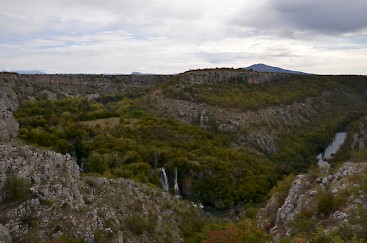
In the year 6 CE, the Dalmatian tribe of the Daesitiae revolted against the Romans, immediately followed by the Breuci, who lived along the Lower Sava. Because both tribes were ruled by men named Bato, the Romans called this war "the War of the Two Batos". They were supported by the Dalmatians, the Andizetes, the Pannonian tribes, the Pirustae, the Liburnian tribes, and the Japodes. For the first time in history, all of Illyricum was united and it took the Roman commander Tiberius (the future emperor) four seasons of campaigning until he had suppressed the insurrection.note According to his biographer Suetonius, this had been the largest Roman war since the Punic Wars.note
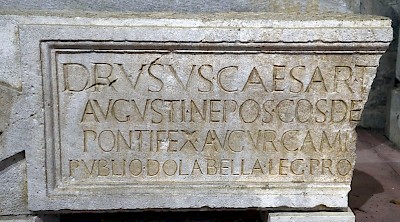
In the year 12, Tiberius celebrated his Illyrian triumph. It is interesting to note that the final Illyrian war served as some kind of justification for Tiberius' later occupation of the imperial throne. He later sent his own son, Drusus the Younger, to Illyricum too: in 17-20, he served as governor of the country his father had pacified.
Sometime between 20 and 50, Illyricum was divided into two provinces, Dalmatia and Pannonia. With legionary bases in Burnum and along the Danube, and cities along the Illyrian coast, there were many examples of the Roman way of life, and the whole area was rapidly romanized.